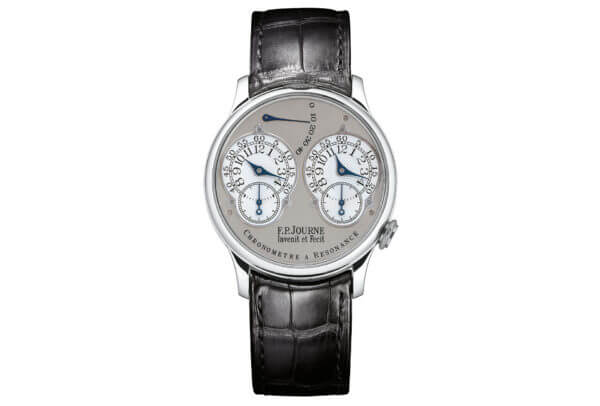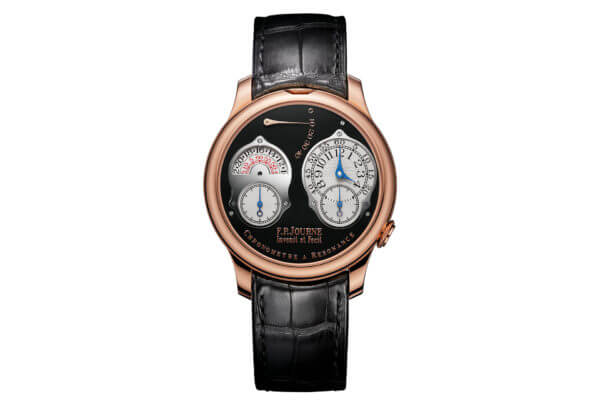Antide Janvier built his first moving sphere in wood at the age of 15, a feat that two years later received recognition from the Science Academy of Besançon. Young François-Paul started making his first tourbillon watch at the age of 20 and when he was 22 years old he designed a first planetarium. Amongst the numerous masterpieces made by Antide Janvier, we are reminded of his mastery of the physical resonance phenomenon in a regulator, a natural phenomenon that F.P.Journe today perpetuates using this technique with a modern conception, that of a mechanical wristwatch that was made to provide the greatest precision.

The first wrist-watch with resonance ® was commercialized as a world premiere in the year 2000. This emblematic timekeeper is a clear demonstration of François-Paul Journe’s research for precision in watchmaking. Each of the two balances alternately serves as exciter and resonator. When the two balances are in movement, they enter into harmony thanks to the resonance phenomenon and begin to beat naturally in opposition. The two balances then support each other, giving more inertia to their movement. This result is possible only if the difference of the frequency from one to the other does not exceed 5 seconds per day cumulated on six positions. Their setting is an extremely delicate task. Whereas an external disturbing movement affects the running of a traditional mechanical watch, the same disturbance, for the Chronomètre à Resonance, produces an effect that accelerates one of the balances as much as it slows the other down. Little by little, the two balances come back towards each other to find their point of harmony, thus eliminating the disturbance. This mechanism revolutionizes established standards and offers an amount of precision that had never been equaled in a mechanical wristwatch.

In 2004, F.P.Journe finally makes another dream come true, manufacturing its Haute Horology movement in precious metal, 18K rose Gold. The Chronomètre à Résonance thus features for the first time an 18K rose Gold movement. A specificity that would from then on apply to all the precision chronometers of the brand. In 2010, to commemorate the 10th Anniversary of the Chronomètre à Resonance, F.P.Journe presented a new version indicating 24 hours with a dial at 9 o’clock, showing the hours of day and night. The dial in Silver guilloche at 3 o’clock provides a second time zone indicating local time. The Chronomètre à Resonance was awarded the Grand Complication Prize at the Grand Prix d’Horlogerie in Geneva in 2010.
















